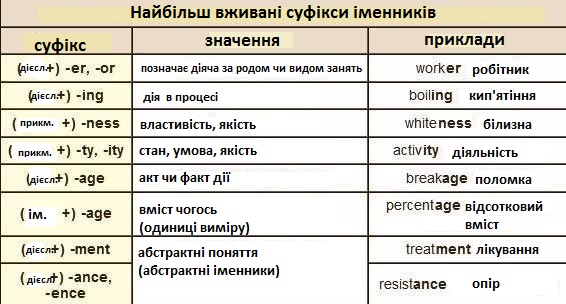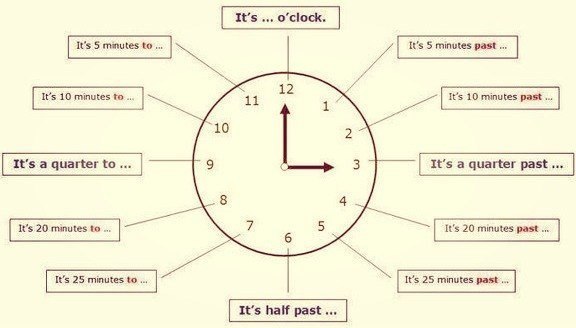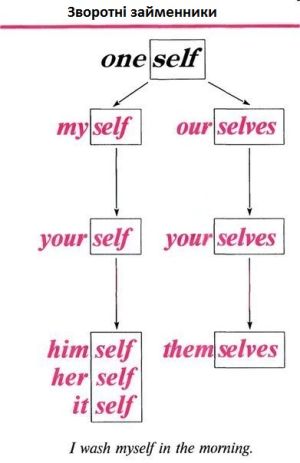Monthly Archives: Грудень 2016
Практична граматика англійської мови з вправами
Посібник охоплює практично всю граматичну систему англійської мови, засвоєння якої передбачено програмою навчання на рівні немовних факультетів вищих закладів освіти та середніх навчальних закладів з поглибленим вивченням англійської мови, і ґрунтується на положеннях теорії педагогічної граматики, що розробляється авторами. Зокрема, враховані психологічні закономірності формування іншомовних граматичних навичок, важливість позитивного емоційного довкілля в класі та адекватного орієнтування студентів. Комплекс вправ, що включає як одномовні, так і перекладні вправи, створює сприятливі умови для ефективного засвоєння змісту посібника під час аудиторних занять та при роботі вдома. Для студентів немовних факультетів вищих закладів освіти, студентів мовних факультетів що вивчають англійську мову як другу іноземну, учнів середніх навчальних закладів з поглибленим вивченням англійської мови, фахівців, які прагнуть вдосконалити англомовні граматичні навички, а також для всіх, хто бажає підвищити власний рівень володіння англійською мовою.
Advanced Grammar in Use by Martin Hewings
A self-study reference book for advanced students of English.
9 Ways to Correct Students Without Correcting Them
1. The Stare
If a student answers a question incorrectly or grossly mispronounces a word, fail to respond to him and rather stare blankly or with a raised eyebrow, like you heard no words. You will convey there was a failure in communication without correcting with your body language cues, and those cues are actually a more powerful way of encouraging a second, third, and even fourth attempt for a right answer. The student will naturally want to try harder to communicate with you.
2. “Is There Another Way to Say That?”
Do not tell her she is wrong, but ask if maybe there is another way (with the implication of better way) to answer your question or communicate. The question will trigger a thought process in which she scans her mental thesaurus.
3. “What Word Did We Learn Yesterday?”
This question inspires recall of lessons taught, and your student will not think you are correcting her, only seeking a different answer based on your lesson plans. It will trigger her brain to replace the incorrect word or usage with what you taught as well.
4. “Does Anyone Else Have A Thought?”
Do not correct your student, but immediately ask if anyone else has a different answer. Keep asking until someone gives you the right response. Positively respond to all of the participation, but very positively respond to the correct answer once you find it and stop asking for more answers. The final answer will sit in their heads as the best and the most correct.
5. “Who Else Thinks That Answer Is Correct?”
Turn it around on your students! Poll who thinks the answer is correct. The correct answer will emerge, but the student who was wrong will have commiseration from classmates that voted for her answer, diffusing the culpability in a lighthearted way.
6. “I Do Not Quite Understand You”
This phrase indicates that the student is on the right track, but is not quite conveying what he wants to communicate. He will keep trying and rephrase his words or try another grammatical construction naturally to attempt to explain. This is much more effective than “That is not how you say that” or other negative correction tools.
7. The Repeat
Nod in agreement with the student and then repeat what she is trying to say correctly. This shows she said it well enough to be understood and that her communication was relayed, but the correct pronunciation or grammar will stick in her mind. For example, if she asks, “I go to bathroom?” say, “Can I go to the bathroom? Yes you can go to the bathroom.”
8. Ask Someone Else
If someone answers incorrectly, just ignore her and ask someone else until you receive the right response!
9. A Game with Rewards
Do not correct wrong answers, but reward the right answer. This is the oldest teacher trick to inspire participation. Give candy, points, prizes, etc. if students answer you correctly, but do not even acknowledge wrong answers.
Action Plan for Teacher’s
Who this book is for?
Action Plan for Teacher’s is a practical guide for teachers of English. It contains tips and suggestions for the English classroom that are suitable for the newly qualified teacher working in a language school, as well as the experienced teacher working in secondary education. Action Plan includes the subject matter of BBC World Service radio series Lesson Plan and Teaching With Technology. It also includes material adapted from other sources including the teacher’s book that accompanied the radio series English One To One. However, Action Plan for Teachers is independent of those productions and is a free standing guide and resource book for anyone who might have to teach an English language lesson.
What this book is about?
This book covers the subject of the English language lesson – what to put in it, how to plan it, and how to put that plan into action. There are three sections: Planning, Action and Glossary.
Planning
In Planning we cover the main principles of English Language Teaching and look at the basics of lesson preparation. We consider how to put those plans into practice in the classroom.
Action
Action is a tool box of practical activities and a guide to classroom practice. There are examples of different types of exercises and how to exploit them in your class. Action also includes information and advice on using a range of technology in your lessons, from the tape recorder to the computer.
Glossary
The subject of English teaching, as with most professions, contains terminology which is specific to the subject. Where possible we have tried to avoid using this jargon in Action Plan for Teacher’s – however, the Glossary section at the end of the book provides examples and explanations of terms and expressions which are frequently used in the field of English Language Teaching. Wherever a word is underlined, you can find a clear explanation of that term in the Glossary. Read more



































